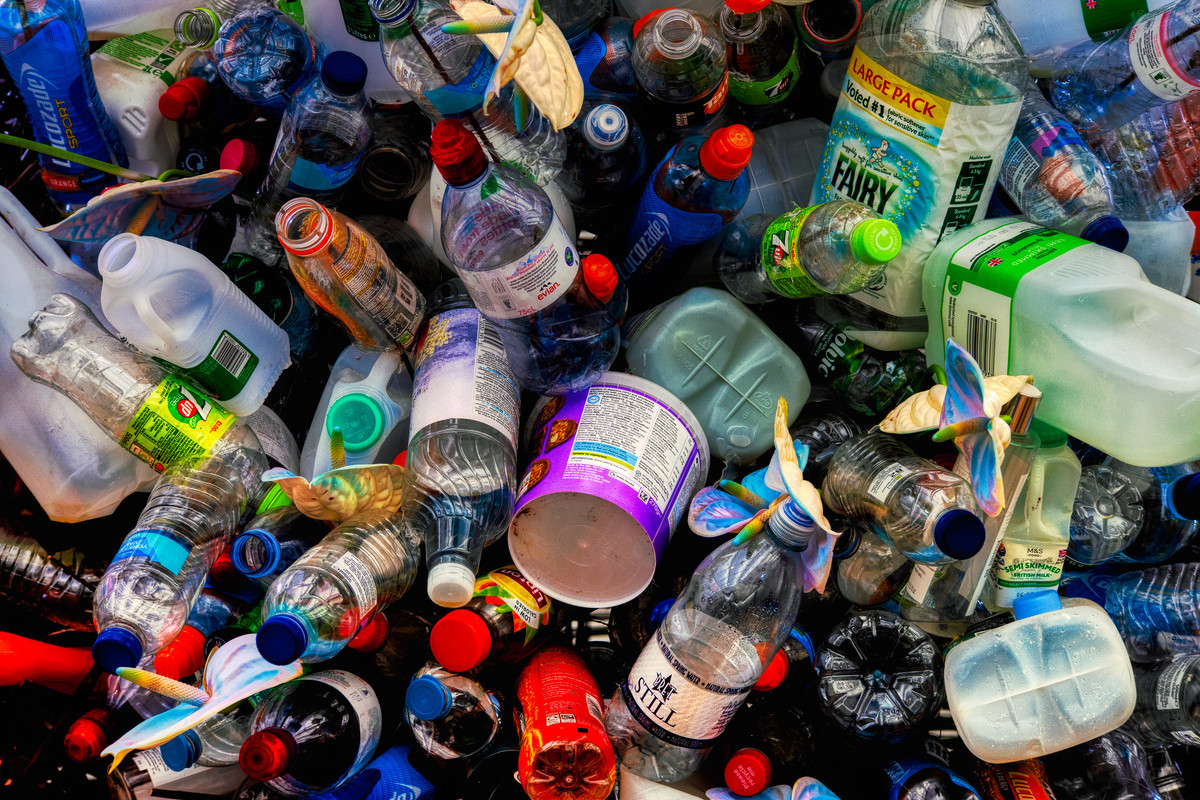Scientists from the University of Texas at Austin have developed a new way to break down plastics in a matter of days, which would otherwise take centuries to fully break down. The research was published in the peer-reviewed journal Nature on April 27, 2022.
This method was developed by creating special enzymes, aided by machine learning, which broke down a specific type of plastic known as Polyethylene Terephthalate, or PET.
Enzymes are a special type of protein that acts as a catalyst or agent to significantly speed up the rate of a chemical reaction. These proteins fit together with a single compound like two puzzle pieces. Once the compound fits into the enzyme, the reaction occurs, and the products split away from the protein. Enzymes can be thought of as a tool for cells to use—to aid them in whatever their needs may be. They can be used again and again, repeating the reaction thousands of times until there are no more compounds that fit.
Enzymes are most commonly talked about in biology and medicine, because the cells in our body create all different kinds of enzymes to break down food into materials that our body can use as energy. They’re a natural part of digestion and the breakdown and accumulation of different fats in our bodies.
This new advancement, however, isn’t about human bodies. This enzyme is a special protein that scientists intentionally mutated inside naturally-occurring bacteria living on plastic waste. When the bacteria had this mutated enzyme in their system, scientists discovered it completely broke down PET into its original monomers. PET currently accounts for roughly 12% of global waste, according to the study.
Polymers and monomers are technical terms to represent some of the most common chemicals found in nature, and many of the materials in our daily lives—from water bottles to clothing—come from these kinds of compounds. Monomers are the Lego bricks that chain together to become polymers. A good example is sugar, which can exist on its own, but when linked together into a large chain becomes a starch.
These chains are extremely difficult to break down independently, once these monomers combine to form a polymer. Typically, starches can’t be broken down into sugar without the help of enzymes found in the stomachs of living beings. PET is just as difficult to break down, if not more so, because it is a synthetic polymer that provides no benefit to multi-celled organisms.
Single-celled organisms, however, are a kind of life that functions and survives differently. These organisms might only need one compound to live, or else they absorb whatever chemicals they come into contact with, breaking them down and producing waste. This makes it extremely easy to place synthetic enzymes inside of them, because whatever waste is produced doesn’t get processed in a larger organ-system, and won’t affect neighboring single-celled organisms.
Breaking down polymers into their basic parts has significant implications for how the recycling industry could function, as well as redefining what it means to recycle.
Breaking down PET into its original monomer structures is like separating paint from a painting. Both the canvas and the paint become like new, and the artist can repaint whatever they desire onto the same canvas, or onto another material entirely.
Traditional belt recycling melts the plastic and molds it into a new product. This destroys the integrity of the plastic after each heating cycle, limiting the amount of times it can be reused until it has no other option but to be thrown into the trash. Like painting over a canvas, it accomplishes the same goal, but leaves waste behind which could affect the overall piece over time.
The monomers that make up PET are also much more environmentally-friendly, and are safer materials to work and construct with than directly remelting plastic. Plastic fumes come with a variety of health hazards, and release noxious gasses into the atmosphere.
What separates this newly discovered enzyme from other research done with mutated bacterial enzymes is how durable it is. Other research has been able to produce these enzymes, but only under specific temperature and pH conditions. These enzymes can’t be used in certain environments like recycling facilities because they’re too fragile.
However, this new enzyme can break down 51 types of PET across a wide range of environments—including recycling facilities.
This scientific advancement will be key to reducing our waste in a way that’s environmentally-friendly, safe and works with natural processes. It’s important that we do our part to reduce as much plastic in our global atmosphere as possible, one bottle at a time.






